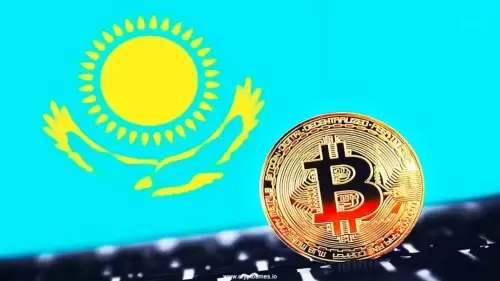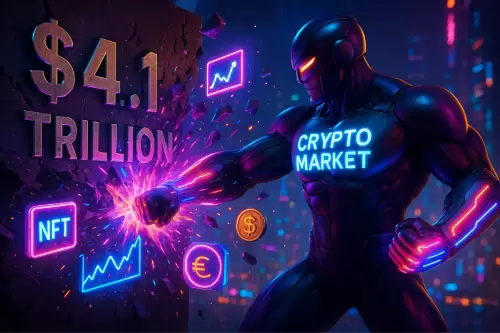 |
|
 |
|
 |
|
 |
|
 |
|
 |
|
 |
|
 |
|
 |
|
 |
|
 |
|
 |
|
 |
|
 |
|
 |
|
古吉拉特邦瓦德纳加尔(Vadnagar)的考古学家发现了与阿波罗多德二世(Apollodotus II)相关的硬币模具,揭示了对古代贸易的见解和印度 - 格里克造币的持久价值。

The discovery of clay coin moulds in Vadnagar, Gujarat, is rewriting the narrative of ancient trade and economic practices in India. These moulds, linked to the Indo-Greek king Apollodotus II, offer a fascinating glimpse into the past, raising intriguing questions about the reproduction and circulation of ancient coinage.
古吉拉特邦瓦德纳加尔(Vadnagar)发现粘土硬币模具正在改写印度古代贸易和经济实践的叙事。这些模具与印度 - 格里克国王阿波罗多二二世有关,对过去的瞥见了,引发了有关古代造币的复制和循环的有趣问题。
Unearthing the Past: Coin Moulds and Apollodotus II
发掘过去:硬币模具和apollodotus ii
Recent excavations at Amba Ghat in Vadnagar have revealed 37 clay coin moulds dating back to around the 5th century CE. What makes this discovery particularly compelling is that these moulds were used to create coins resembling those of Apollodotus II, an Indo-Greek ruler who reigned centuries earlier, between the 2nd and 1st centuries BCE. Apollodotus II was known for his bilingual coins, drachmas, which were used in ancient trade. However, no actual coins were found alongside the moulds, adding a layer of mystery to the find.
瓦德纳加尔(Vadnagar)Amba Ghat的最新发掘揭示了37个粘土硬币模具可追溯到公元5世纪左右。使这一发现特别引人注目的是,这些模具被用来制造类似于阿波罗多德二世(Apollodotus II)的硬币,后者是印度 - 格里克统治者,他在公元前第二至1世纪之间在几个世纪之前统治了几个世纪。 Apollodotus II以他的双语硬币Drachmas而闻名,这些硬币在古代贸易中使用。但是,在模具旁边没有发现实际的硬币,从而为发现增加了一层神秘。
A Hub for Coin Reproduction?
硬币繁殖的枢纽?
Archaeologists suggest that Vadnagar may have been a local center for reproducing these coins, possibly to meet the demands of trade markets long after the original coins had disappeared. The moulds show signs of reuse, and some even feature double impressions, indicating that multiple coins could be cast at once. This suggests a deliberate effort to replicate coins that were once valuable in long-distance trade.
考古学家认为,瓦德纳加(Vadnagar)可能是繁殖这些硬币的当地中心,可能在原始硬币消失后很长时间就满足贸易市场的需求。模具显示出重复使用的迹象,有些甚至具有双重印象,表明可以一次施放多个硬币。这表明是为了复制曾经在长途贸易中有价值的硬币而进行的努力。
Gujarat's Connection to Ancient Sea Trade
古吉拉特邦与古代贸易的联系
This discovery underscores Gujarat’s significant role in ancient sea trade. Historical texts mention Apollodotus’s coins being used in Bharuch, a major port in Gujarat. The persistence of Apollodotus’s coins in trade, long after his dynasty had faded, highlights the enduring value of silver coinage across centuries and regions.
这一发现强调了古吉拉特邦在古代贸易中的重要作用。历史文字提到了阿波罗多杜斯的硬币在古吉拉特邦的主要港口Bharuch中使用。阿波罗多杜斯(Apollodotus)在贸易中的硬币的持久性在他的王朝逐渐消失很久之后,突出了几个世纪和地区的银币的持久价值。
Why Reproduce Ancient Coins?
为什么要复制古代硬币?
One of the biggest questions raised by this discovery is why coins of a long-dead king were being reproduced centuries later, and so far from his original kingdom. Researchers theorize that these reproductions might have been created to meet ongoing trade demands, particularly along the Arabian Sea and Indian Ocean routes. The original coins were made using methods like punch-marking and die-striking, the moulds suggest the people of Vadnagar found original coins and used them as models to create new moulds, a novel approach to coin production.
这一发现提出的最大问题之一是,为什么几个世纪后复制了一个长死国王的硬币,而离他最初的王国很远。研究人员认为,可能已经创建了这些复制品来满足持续的贸易需求,尤其是沿着阿拉伯海和印度洋路线。原始硬币是使用诸如打孔标记和撞击之类的方法制成的,模具表明瓦德纳加尔的人们找到了原始的硬币,并将它们用作创建新模型的模型,这是一种新型的硬币生产方法。
The Broader Significance
更广泛的意义
The find adds new importance to the region and helps in understanding Gujarat’s history. Artifacts like Indo-Pacific beads, shell bangles, coins, cowries, and torpedo jars confirm Vadnagar’s role as a production center and land port.
该发现增加了该地区的新重要性,并有助于理解古吉拉特邦的历史。印度太平洋珠子,壳牌手镯,硬币,库里斯和鱼雷罐等文物证实了瓦德纳加尔作为生产中心和土地港口的作用。
Who knew that digging in the dirt could unearth such a cool story? These coin moulds aren't just old clay; they're a tangible link to a time when trade routes buzzed with activity, and the echoes of Greek kings resonated in the heart of India. It's a reminder that history is always waiting to be discovered, one mould at a time!
谁知道在泥土中挖掘会发掘出如此酷的故事?这些硬币模具不仅仅是旧的粘土。它们是与贸易路线充满活动的时代的切实联系,而希腊国王的回响在印度中心产生了共鸣。提醒人们,历史总是在等待发现,一次是一个模具!
免责声明:info@kdj.com
所提供的信息并非交易建议。根据本文提供的信息进行的任何投资,kdj.com不承担任何责任。加密货币具有高波动性,强烈建议您深入研究后,谨慎投资!
如您认为本网站上使用的内容侵犯了您的版权,请立即联系我们(info@kdj.com),我们将及时删除。
-

- 哈萨克斯坦的加密飞跃:比特币ETF和中亚的数字融资未来
- 2025-08-13 11:59:45
- 哈萨克斯坦通过现场比特币ETF和创新营销在中亚的加密货币场景中大放异彩。看看它的影响。
-

-

-

- 比特币的疯狂骑行:集会,回调,接下来是什么
- 2025-08-13 09:00:19
- 比特币最近在回调之前飙升至122,000美元。检查市场量和链上数据,揭示了对比特币集会和潜在未来的见解。
-

- 比特币,Bitmax和机构需求:加密投资的新时代
- 2025-08-13 08:58:33
- 探索Bitmax的比特币扩展和更广泛的机构采用如何重塑加密货币景观,这是由战略投资和不断发展的法规驱动的。
-

-

- 乘坐加密浪潮:NFTS,DEFI和市场高4.2吨
- 2025-08-13 08:30:46
- 探索加密货币市场的最新趋势,包括NFTS的激增,Defi Innovations和主要见解,推动了该市场的售价4.2吨。
-

- 冷钱包:现金返还,加密货币和像老板一样的汽油费
- 2025-08-13 08:20:49
- 冷钱包改变了游戏。获得汽油,掉期等的现金返还。这是我们所知道的高加密费的终结吗?让我们潜入!
-































































